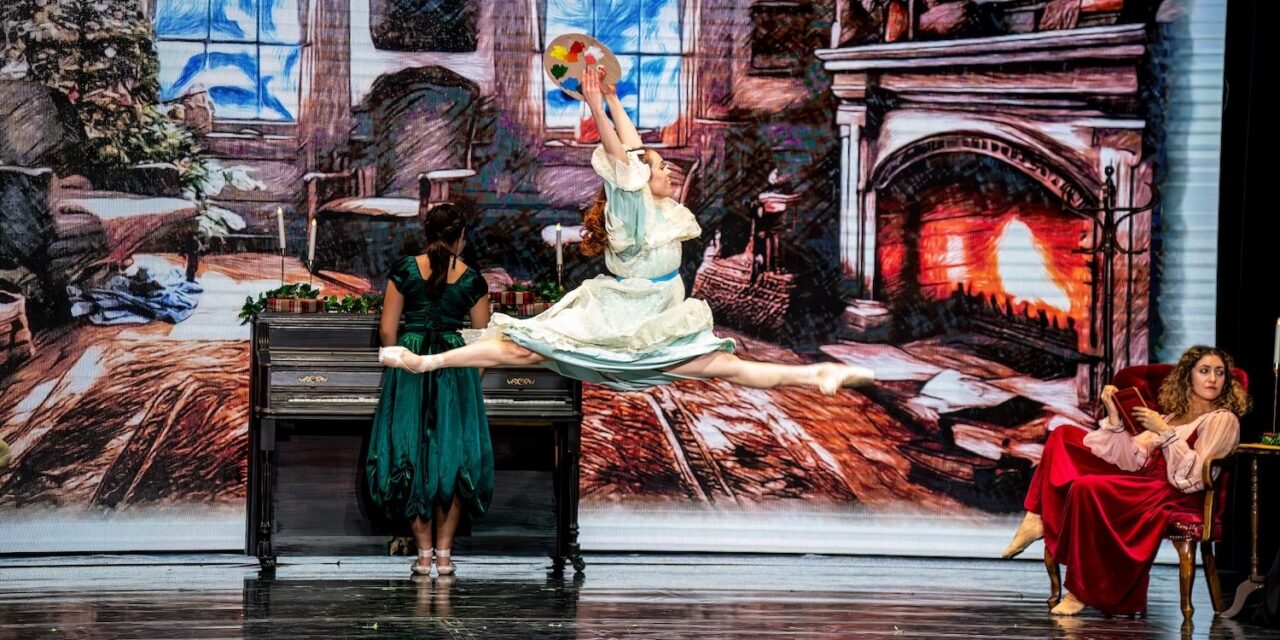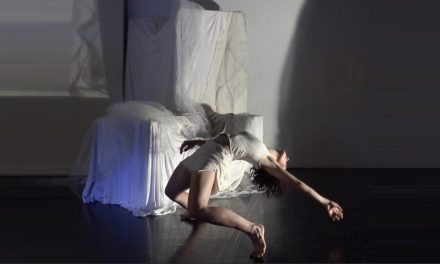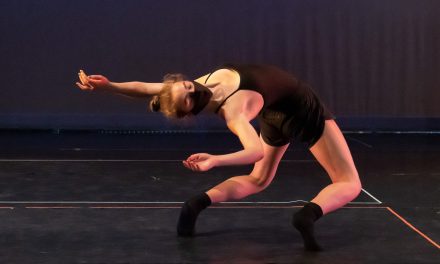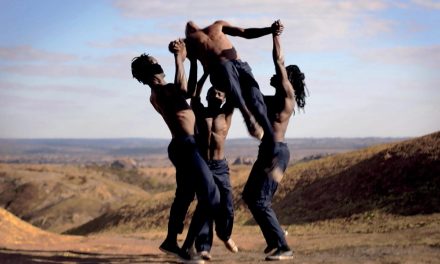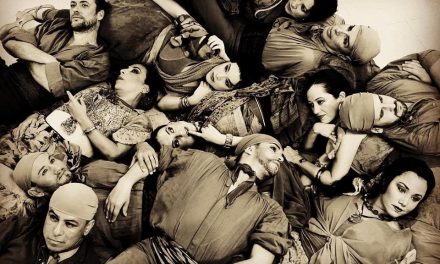This weekend, choreographer Emma Andres and her dancers transform their successful retelling of Louisa May Alcott’s Little Women from an immersive experience roving among the Victorian houses of Heritage Square into a full-length ballet on the proscenium stage of the Pasadena Playhouse.
In 2023, choreographer Emma Andres launched her dance re-telling of Little Women, initially for a video, and then for a series of immersive performances. Divided into groups with a guide, the audience moved among the Victorian mansions of Heritage Square, each house hosting an episode from the book. Buoyed by enthusiastic audiences and joyous reviews, in late 2024, Andres took a full length version with a score by Daniel Robbins into the Wilshire Ebell’s proscenium stage. While more Italian Renaissance than either Heritage Square’s LA Victorian or Concord, Massachusetts civil war architecture, the elegant 1927 Ebell cast a spell of an earlier era. Preparations to take the full-length version into the Pasadena Playhouse fell victim to February’s Eaton fire. Like the resilient March family in Alcott’s book, Andres and her collaborators took a step back, rebuilt, and are set to perform at the Tony Award-winning Pasadena Playhouse.
Recently, Emma Andres spoke with LA Dance Chronicle dance writer Ann Haskins about how her Little Women Ballet came back after the Eaton fire, how she has adapted the immersive ballet for a proscenium theater, and why she wants the audience to keep an eye on the four sisters’ feet. (The interview has been edited for length and continuity).
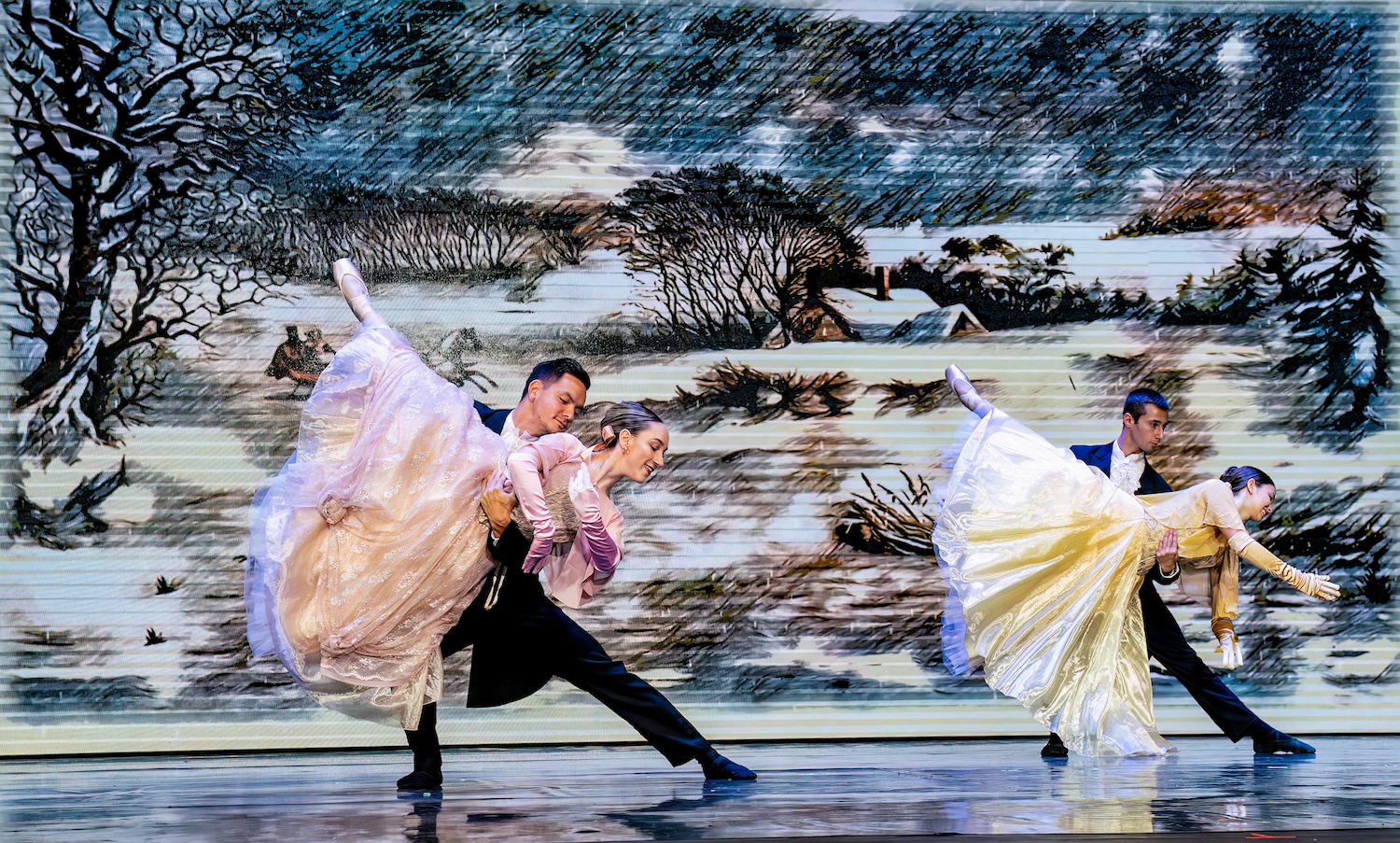
“Little Women Ballet. Photo by Edie Tyebkhan Photography
Haskins: Had the planning for the Pasadena Playhouse begun before the February fires?
Andres: We started about the same time as the fires. We have a connection to the Pasadena Playhouse. Ross Clark, who plays Laurie’s grandfather Mr. Lawrence, is the archivist at Pasadena Playhouse, and also was part of their last graduating class when it was a college, The Playhouse was actually his suggestion, and he’s been an integral part of getting us in there. The theater also felt very fitting. Because we rehearse out of Pasadena Civic Ballet, Pasadena is home for the company. We thought it would be a good place to move the full ballet, and after that, to perform around the LA area.
Haskins: How did the Eaton fire in Altadena, adjacent to Pasadena, impact the production?
Andres: I lost my childhood home in the Eaton fire. We had been slowly building ourselves up. But we’re not a big company and we didn’t have a ton of money for a big storage space. My parents’ garage was storing everything, and everything was destroyed in the fire. Our goal became to continue moving forward, despite the fire. I sent out a message to all of the dancers that I was not giving up on Little Women, and I hoped they would stick by me as we tried to rebuild. Even though we lost everything in the fire, and I don’t mean to sound cheesy, but really, one of the best parts of this show has been the community, and everyone was really wonderful. When we put out a call out to the community to help us rebuild, we received a lot of monetary and fabric donations. That helped us rebuild the show, specifically for the immersive in late May. We had several seamstresses who have helped us recreate many of the dresses, including Meg’s wedding dress.
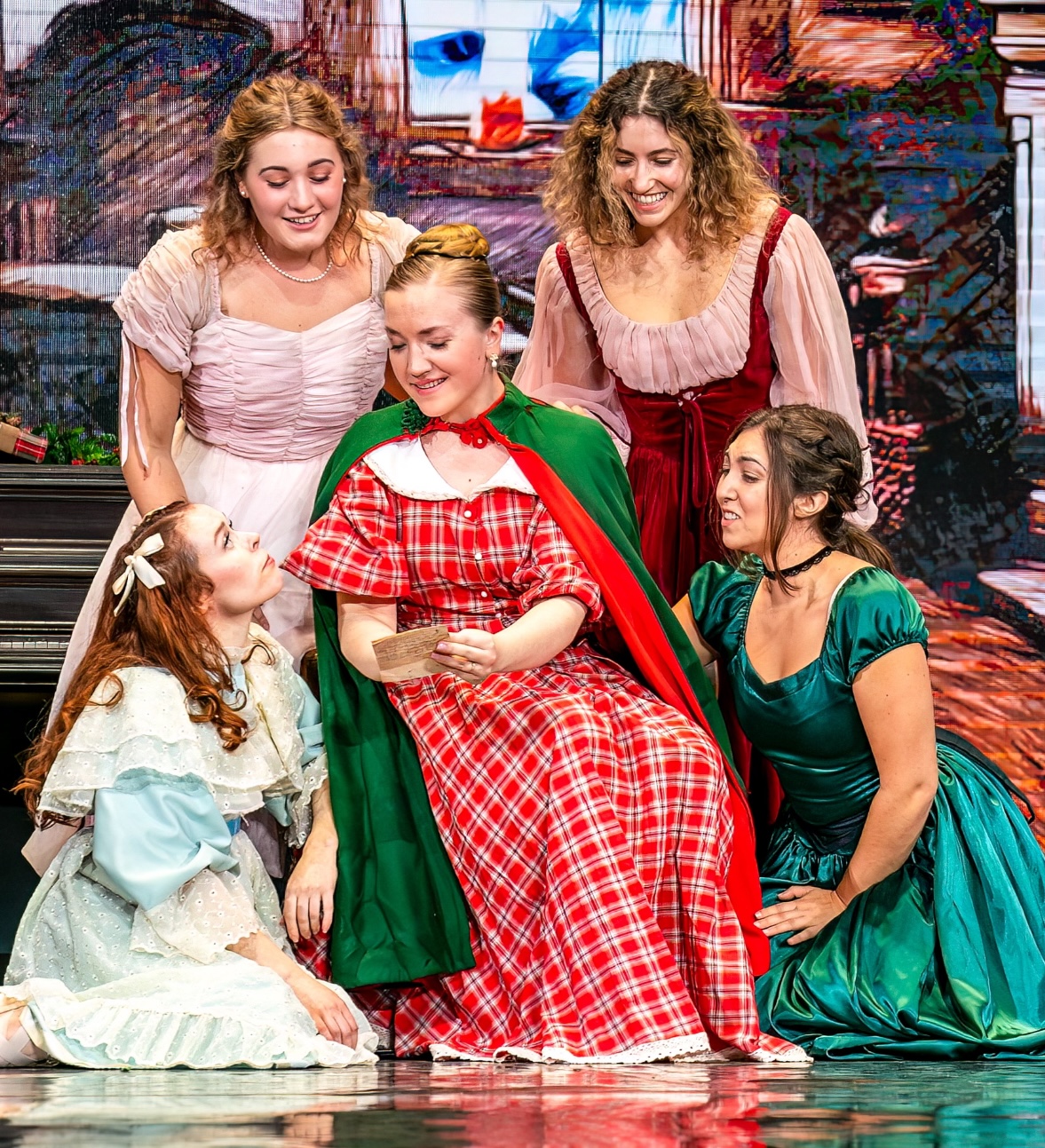
“Little Women Ballet.” Photo by Edie Tyebkhan Photography
Haskins: Were those recent immersive performances at Heritage Square part of your coming back process?
Andres: Definitely. I was happy with how quickly we were able to get everything back to what we had before. There certainly were some things still missing, but overall, I feel like we did a pretty good job of coming back. There’s always room for improvement, but I am glad we were able to keep it going.
Haskins: How did you take Little Women Ballet from an immersive experience into a full-length ballet for a proscenium theater?
Andres: My goal from the beginning was to create a full length story ballet. Choreography has always been my focus, and I really wanted to create ballets about women’s stories. That actually was the ultimate goal with Little Women. At first, I saw Heritage Square as a stepping stone towards that goal, a way to get the word out about the stories we’re trying to tell through dance. It ended up being very interesting and exciting. People really liked the immersive experience because it is so different from the proscenium stage. An immersive performance really gets people up close to the dancers, the movement and the acting. Also at Heritage Square we had the added bonus, bringing everyone together at the end with the cast dancing, then the audience learning Victorian dancing, and joining in. So Heritage Square became a big thing for us, but originally, it started as a stepping stone to move to a proscenium stage which is what we are doing now at the Pasadena Playhouse. I always knew that we were going to do that.

Little Women Ballet. Photo courtesy of the artists
Haskins: It sounds like you were surprised when Heritage Square took on a life of its own. You’ve brought the show back several times, much more than just a try out or stepping stone to a proscenium stage.
Andres: It really did. People liked how it worked so well with the architecture of the space. There are not a lot of places around LA that have those beautiful homes anymore. Heritage Square is almost built like a small town and becomes a space to experience the story in an exciting way. It gets you close to the dancers, and we also have these narrators that tell the story, in case the audience doesn’t know Little Women. Other dance companies have done immersive performances, but I feel like this is special. Even though the era and architecture are slightly different than the Civil War and how houses would have looked in Concord, Massachusetts, the feel of Heritage Square comes close and transports the audience into the story. I think that really appeals to people.
Haskins: Heritage Square is episodic performances in one house with a walk to the next house. That walk gives time for the audience group to chat about what they had seen before the next scene. A full-length proscenium performance is very different.
Andres: The thing about the immersive at Heritage Square is each audience group has a narrator who is a different character in the story with a different perspective of what happened and visiting the houses in a different order. Everyone’s seeing the same dancing, and I choreographed the sections to be adaptable for the stage. Everything I was creating, I was creating in hopes that we could eventually stitch it together and expand it to a full length ballet running two hours. When I sat down to create the storyline for what we were going to do for the book, I was really weaving together several sections from the immersive and then kind of intertwining it with the whole corps of dancers. The main character parts are drawn from the immersive. There are also larger sections that expand the story. We have Sally Gardner’s pivotal party when Jo meets Laurie. Also, the immersive concludes with Meg’s wedding to John Brooks and doesn’t include all that happens afterwards in the book. Also, the small rooms in Heritage Square did not give the dancers a lot of space. The stage allows more room to perform, to really move. And the immersive has changed since the first performances. One section expanded from the fall 2024 immersive is a duet for Beth and Jo where Beth has accepted that she is dying and is trying to convince Jo to let her go.
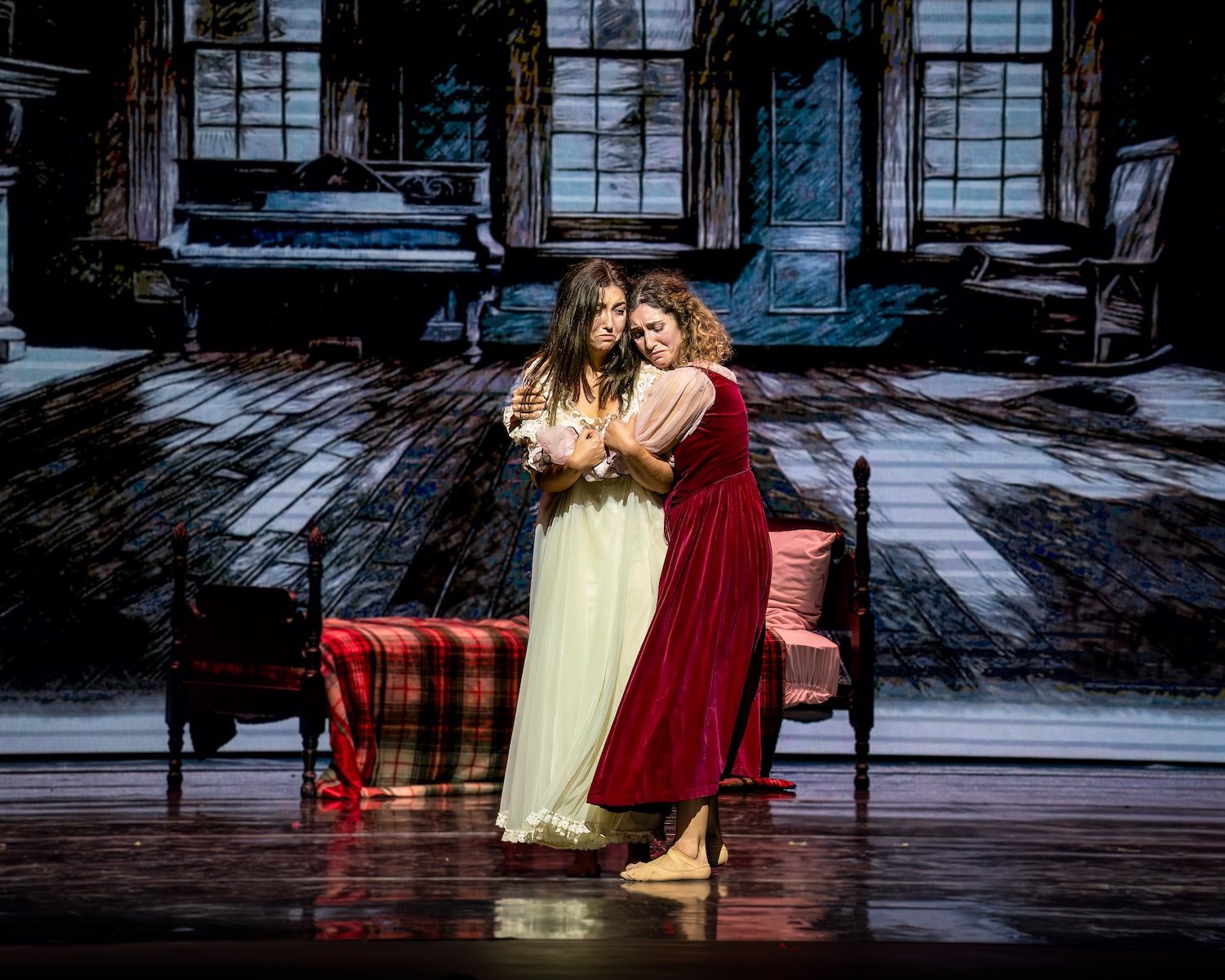
“Little Women Ballet.” Photo by Edie Tyebkhan Photography
Haskins: Are the dancers at the Pasadena Playhouse dancers from the immersive Heritage Square performances? Have they changed over time?
Andres: Originally in 2023, most of the dancers were students of mine or friends that I knew, because it was a small project, and, again, we were just trying to see how it was going to go. We made a short film to start, a preview, and those four dancers did the first live performances. Then, we needed more sisters, understudies and more casts. We did auditions in March and September 2024. We ended up adding about three of each character. About 75% of the current cast came through those auditions including about eight from UC Irvine’s dance department. Besides that, all the children in the show are actually students of mine from Pasadena Civic Ballet.
This time there are mostly two of each character. The oldest sister, Meg, is Rebekah Tkach and me. Jo is Sophia Moritz and Anna Lee Rohovec. Beth was originally Katherine Moritz, but this time, Claire Simmons will dance all performances. Since our original Amy, Taylor Hudgeons, is now with Los Angeles Ballet, Catie Faye Smith and Madison Marsh will be Amy. Marmee is Ludmila Malakhov, Laurie is Christopher Flores and Joshua Tyebkhan will dance John Brooks, Laurie’s tutor who marries Meg.
Haskins: You have essentially formed a dance company, currently called Little Women Ballet. It sounds like this is not the only ballet you want to do. Are you going to have a different name for your company or will it always be Little Women Ballet?
Andres: Actually, we’re trying to decide that. Even though it’s titled Little Women Ballet after the book, it also aligns with our mission to create stories about women. So we are working on exactly what we want to call the company and what people want to see from us. That’s how we created Little Women Ballet. We slowly tried to grow the show so that it could sustain itself. We didn’t want to jump too far into it without seeing how people would take it. So I think that’s how we’re also approaching going forward as a company.
Haskins: Is there anything else you wanted to talk about, or things you would like people to know?
Andres: Yes. People should know they really don’t have to know the book, Little Women, to understand the story. The audience is guided throughout the whole story. They can see characters who are just like them on the stage, while keeping things in a classical ballet mode. I also wanted to show the differences in the characters through ballet. Watching the full-length at Pasadena Playhouse, I hope the audience will look at the dancers’ feet, because each of the four sisters is categorized by her personality through what shoe she is wearing. Amy and Meg take on more traditional feminine roles, and both wear pointe shoes the whole time. For Jo, she is in soft shoes and walks with flexed feet the whole time. That is an attempt to try to capture her tomboy kind of masculine energy, but also trying to say she is trying to get away from traditional cultural norms. And so for this, while ballet, she’s not wearing pointe shoes, right? There is one point in the ballet where Meg wants Jo to wear pointe shoes. Jo refuses and throws the pointe shoes off stage. With Beth, in the beginning she wears pointe shoes, but as she gets sicker, she goes to soft ballet shoes, and eventually she’s barefoot as she is dying. The last thing I’ll point out is people often ask me why I put Laurie in socks and white shoes. He’s the only male dancer who does not wear more classically Victorian boots or footwear. Laurie is the sisters’ best friend, but he’s also very immature and has a lot of growing up to do. So Laurie wears socks and ballet shoes like a male dancer would traditionally wear in a ballet class. Laurie is supposed to have a youthful presence, a younger look.
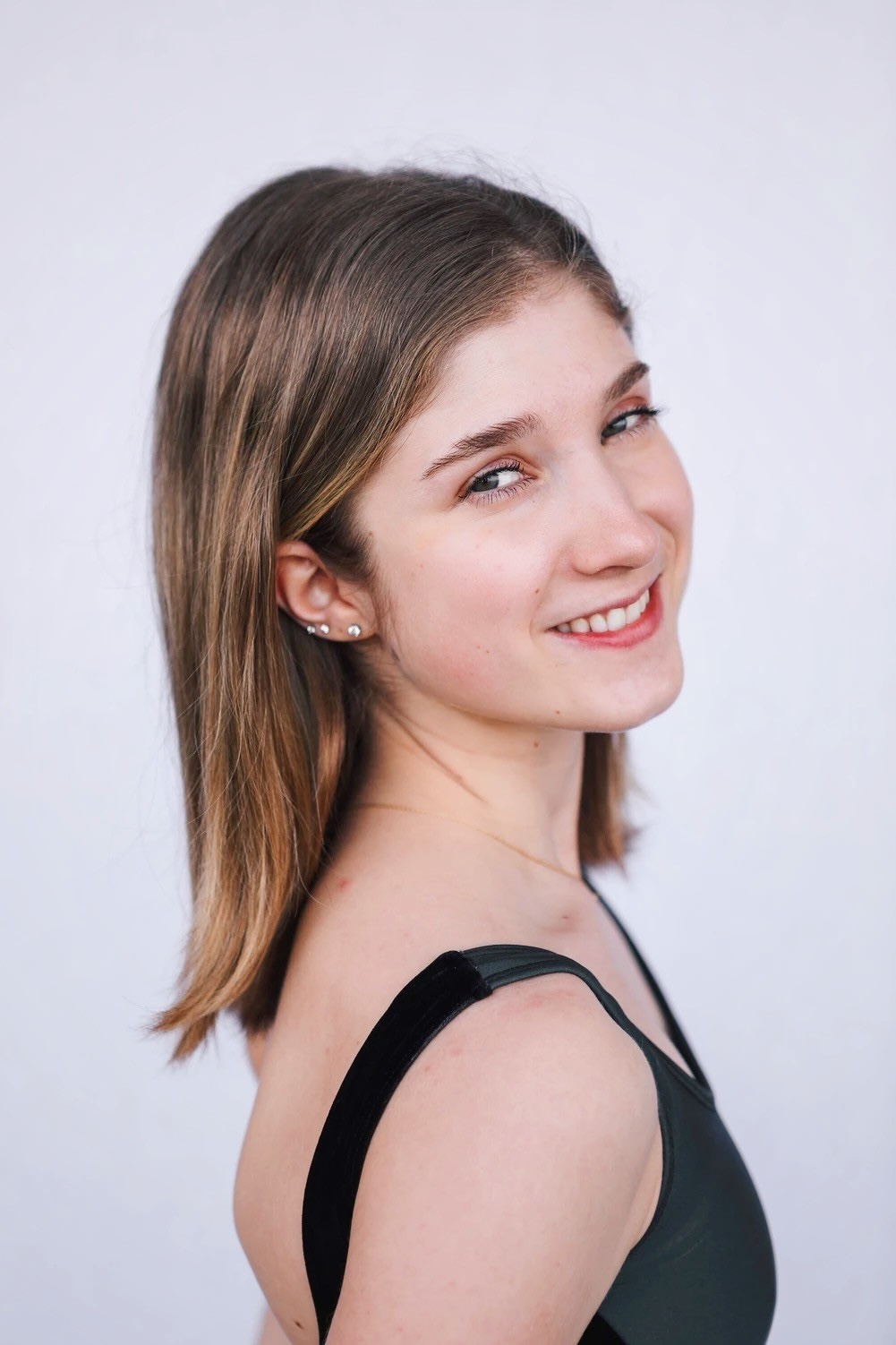
Emma Andres. Photo courtesy of the artist
Haskins: You’ve lived with Little Women for several years now. Is there another story that you have percolating for down the road?
Andres: Actually yes, and not because it’s the 100th year anniversary and many people are doing it right now, but I’m dying to do Great Gatsby, but from the perspective of Daisy. I have many ideas ruminating, but that’s definitely the one that I’m hoping to do soon.
Little Women Ballet at Pasadena Playhouse, 39 S. El Molino Ave., Pasadena; Sat., June 21, 2 & 7 pm, Sun., June 22, 2 pm, $42-$42. Little Women-Pasadena Playhouse
This article was edited on 6/18/25 to correct performance dates.
Featured photo: “Little Women Ballet. Photo by Edie Tyebkhan Photography

